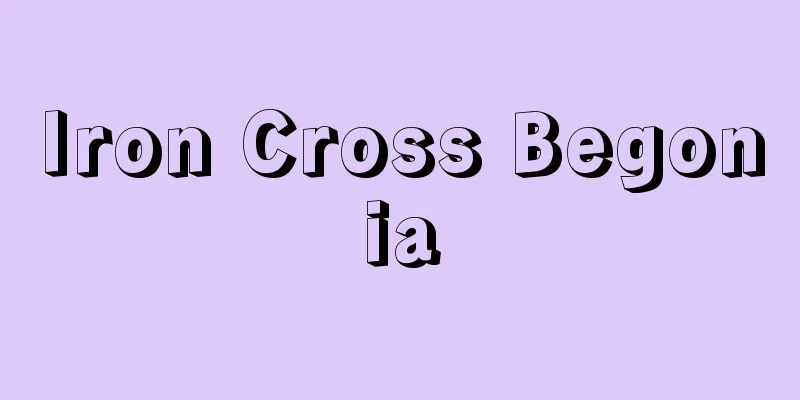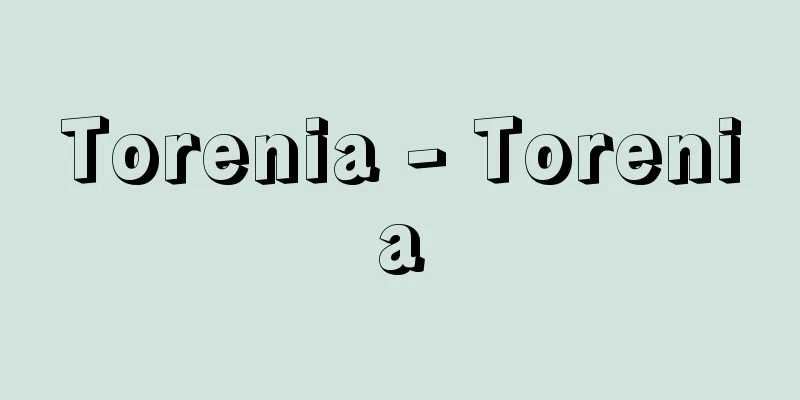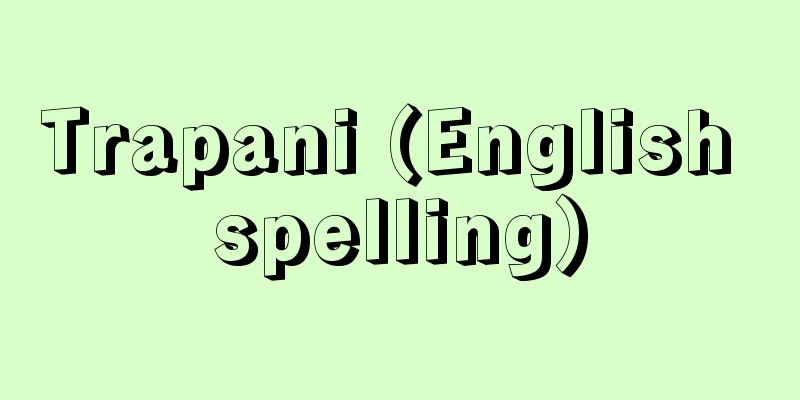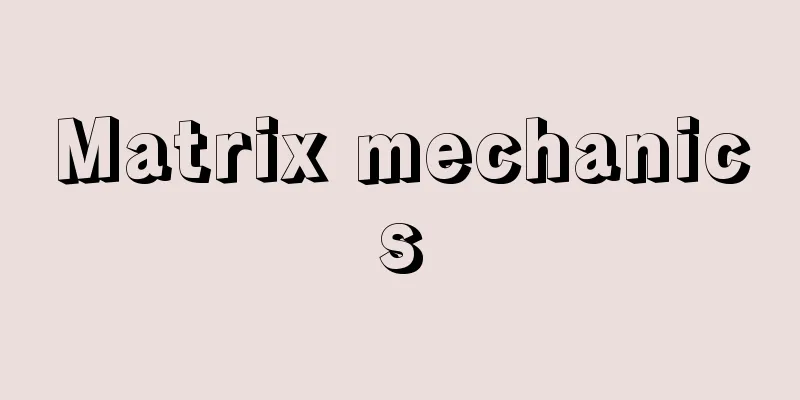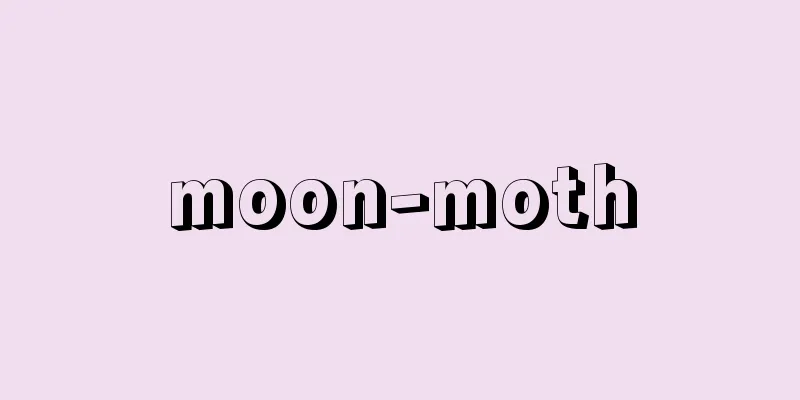Malocclusion

|
◎ Why does malocclusion require treatment? [What kind of disease is it?] ◎ There are three main reasons [Cause] Other malocclusions [What kind of disease is it?] Malocclusion means that the bite cannot be properly aligned. However, it is very difficult to judge whether the bite is correct or not, and only a specialist can tell. This is because it is necessary to look at the individual's level of development and balance to determine whether the bite is unique to that individual, whether it is an occlusion that emphasizes the function of chewing, whether it is an occlusion that suits the patient's age, or whether it is a so-called average occlusion. No matter how average a occlusion may be, it may be abnormal when considering the balance of the individual's growth, so an assessment by an orthodontist is necessary. The common treatment for malocclusion is orthodontics ("What is orthodontics for children?"). [Cause] Causes of malocclusion include genetics, problems with the teeth themselves, and a poor relationship between the upper and lower jaws. Genetic causes include the size of the jaw and face, and the size, shape, and number of teeth. Abnormal swallowing habits, habits such as sticking out the tongue or sucking one's fingers, and nasal diseases that cause one to always breathe through the mouth can also be causes. ● Problems with the teeth themselves - how quickly or slowly the teeth grow in. Baby teeth that have already erupted at birth are called natal teeth, while those that erupt within 30 days of birth are called new teeth. There are usually only one or two of these teeth, and they are generally found in the baby central incisor area of the lower jaw. On the other hand, if the teeth erupt later than the average time, it is difficult to determine the cause, and it is necessary to consult a specialist. Acquired abnormalities in the position of teeth can occur when baby teeth fall out before permanent teeth come in (premature baby tooth loss), when permanent teeth erupt early due to precocious maturity, when baby teeth do not fall out even when it is time for permanent teeth to come in and get in the way of the eruption of permanent teeth (late retention), or when permanent teeth fall out for various reasons such as trauma, cavities, or periodontal disease. In such cases, it is necessary to control the teeth that come in later or to extract the late retention teeth early and guide the permanent teeth into the correct position. Poorly shaped teeth Tooth shape also has a significant impact on the alignment of teeth. In other words, if the width of the tooth is too large compared to the space available for eruption, there will not be enough room for the tooth to grow in and it will grow in an abnormal position. Tooth that is too large is called macrodontia, and when all teeth are large, it is seen in hereditary gigantism, but there are also cases where the teeth appear normal in size but the jaw is small and they appear relatively large. Also, although it is extremely rare for only one tooth to be large, it can be seen in the mandibular wisdom tooth. Conversely, teeth that are smaller than normal (minor teeth) are often seen in the upper jaw lateral incisors and wisdom teeth. There are also twin teeth, which have two tooth heads (crowns) but only one root, fused teeth, which are two teeth attached to each other, and fused teeth, which are only attached to the roots. One of the major causes of malocclusion is when the teeth grow in the wrong place or in the wrong direction. Abnormal tooth growth is also a problem. For example, there are teeth that are displaced toward the tongue or cheek from the normal alignment, teeth that are rotated in relation to their axis, teeth that are tilted, and teeth that are displaced in places that they are not supposed to be. These conditions, more or less involved, can cause a condition called crowding, where teeth are crowded together. These abnormalities can occur during the primary dentition, mixed dentition, and permanent dentition periods. Missing or excess teeth Having too few or too many teeth can also cause malocclusion. Complete anodontia, where no teeth are present from birth, is often hereditary, but it is relatively common for one or several teeth to be partially missing. The most common is the wisdom tooth, also known as the third molar, but the upper and lower second premolars and upper lateral incisors may also be missing. Missing baby teeth are relatively rare, but the baby lateral incisors on the upper jaw may be missing. On the other hand, when extra teeth are present, they are most commonly found between the upper central incisors. In this case, the tooth is cone-shaped and has a short root. The next most common site is the fourth molar behind the upper wisdom tooth. Although it is rare in baby teeth, it has been reported that it can be found in the baby lateral incisors of the upper jaw. ● When the relationship between the upper and lower jaws is poor ■ Maxillary protrusion (protruding teeth) This is a bite condition in which the front teeth of the upper jaw protrude significantly further forward than the front teeth of the lower jaw. There are cases where the upper jaw protrudes too far forward, the lower jaw is small and recessed, or there is nothing wrong with the jaw but the teeth protrude forward. This can be caused by genetics, as well as by disharmony in the growth of the upper and lower jaws, thumb sucking, mouth breathing due to sinusitis (breathing through the mouth because it is difficult to breathe through the nose). Treatment We consider the relative positions of the upper and lower jaws, and the balance between the size of the jaw and the teeth. For example, if the teeth are too large for the jaw, or if the lower jaw is too small, we can extract the first premolar of the upper jaw and move the protruding teeth down to their original position. For example, in a case where tooth extraction is required for maxillary prognathism, one tooth (usually a premolar) is extracted from the top and one from the bottom, and the upper front teeth are moved back and the lower teeth are moved forward to improve the overall bite. Also, in cases where the baby molars fell out early and the permanent molars push other teeth forward, resulting in maxillary prognathism, the molars can be pushed back to create space. In this case, the first molars are moved back and a cap-like device with wires attached to it may be fitted to use an outside-of-mouth fixed source to restrict the growth of the maxilla (an extraoral fixation device). This method of finding a fixed source outside the mouth is often inconvenient for patients, so recently there has been a method of orthodontics in which an implant (column "About Implants") is embedded in the maxillary bone and used as a fixed source. In addition, there is a method in which a device called an activator is placed in the mouth and the upper teeth are pushed back while the lower jaw bone is pushed forward. For more information, please consult a specialist. ■ Mandibular prognathism (crossbite, underbite) This is an occlusion condition in which the lower front teeth protrude further forward than the upper front teeth. The most common cause is a jaw bone problem, such as when the lower jaw develops too much or the upper jaw does not develop enough, but mandibular prognathism can also occur when the lower teeth are large even if there is no abnormality in the jaw bone. Treatment Treatment for mandibular prognathism is usually started after all the baby teeth have grown in, and the state of the bite is examined. If only the lower front teeth are protruding forward, and only the teeth are in crossbite, orthodontic treatment can be started at any time. However, if left untreated for a long time, the upper teeth will push against the lower teeth, worsening the crossbite, and the bones will continue to grow, so care must be taken, as it may become necessary to treat the jaw bones. For example, in a case where tooth extraction is required for mandibular prognathism, one tooth (usually a premolar) is extracted from the top and one from the bottom, and the lower front teeth are moved back and the upper back teeth are moved forward to improve the overall bite. When the canines and not just the front teeth are misaligned, it is due to bone abnormalities such as the lower jaw being too large and the upper jaw being too small, so it is necessary to control bone growth quickly. Once an adult, surgical correction is required to cut the enlarged bones or widen the small bones. Other malocclusions ■ Crowding (irregular teeth, crooked teeth) This is a condition in which teeth are arranged in an irregular zigzag pattern. It is caused by the mismatch between the size of the teeth and the jawbone due to the abnormality of the tooth size mentioned above, or the displacement of molars to the inside. It may also be caused by marginal periodontitis (pyorrhea). ■ Midline diastema This is a condition in which a gap appears between the central incisors on both sides of the upper jaw. It can be caused by a supernumerary tooth, an impacted tooth, or an abnormality in the upper lip midline frenulum (the mucous membrane fold that connects the upper lip to the gums of the upper jaw). ■ Open bite Typically, this refers to a condition in which the molar area comes into normal contact, but the premolars and front teeth do not come into contact. ■ Edge-to-edge bite Generally, the upper incisors cover (overlap) the incisal edges of the lower incisors, but this refers to a condition in which the upper and lower incisors are in contact with each other at their incisal edges. ■ Overbite This refers to a deep bite between the upper and lower front teeth, in which the lower front teeth can damage the inner gums of the upper jaw. ■ Cross bite This is a condition in which the lower jaw dentition is displaced laterally in relation to the upper jaw dentition. Source: Shogakukan Home Medical Library Information |
|
◎なぜ不正咬合は治療が必要か [どんな病気か] ◎原因は大きく分けて3つ [原因] その他の不正咬合 [どんな病気か] 不正咬合とは、正しいかみ合わせができないことをいいます。ただし、かみ合わせが正しいかどうかの判定は非常にむずかしく、専門家でないとわかりません。なぜなら、その人の発育程度やバランスをみて、その人に合った個性的な咬合であるのか、かめるという機能を重視する咬合なのか、その患者さんの年齢に合った咬合なのか、それとも、いわゆる平均的な咬合なのかをみきわめる必要があるからです。咬合がいかに平均的であっても、その人の成長のバランスから考えて、おかしい場合もあるわけですから、矯正(きょうせい)専門医によるみきわめが必要になるのです。 不正咬合の一般的な治療は、歯列矯正(しれつきょうせい)(「子どもの歯列矯正とは」)です。 [原因] 不正咬合の原因には、遺伝やくせによるもの、歯自体に問題があるもの、上下のあごの関係が悪いものなどがあります。 ●遺伝やくせによるもの 遺伝的な原因としては、あごや顔面の大きさ、歯の大きさ、形および数などが関係し、また、異常な飲み込み方や、舌(した)を出したり指をしゃぶるなどのくせ、鼻の病気でいつも口で息をすることが原因になることもあります。 ●歯自体の問題 歯の生え方の早さと遅さ 出生時にすでに萌出(ほうしゅつ)している(生えている)乳歯(にゅうし)は出産歯(しゅっさんし)と呼ばれ、生後30日以内に生えてくる場合は新生歯(しんせいし)と呼ばれます。これらの歯は通常1~2本であることが多く、一般的には下顎の乳中切歯部(にゅうちゅうせっしぶ)にみられます。逆に平均的な萌出時期よりも遅れて生える場合には、その原因を探ることはむずかしく、専門医への相談が必要です。 後天的には、永久歯(えいきゅうし)が生えてくる前に乳歯が抜けてしまったり(乳歯早期喪失(にゅうしそうきそうしつ))、性的早熟で永久歯が早く萌出したり、永久歯が生える時期になっても乳歯が抜け落ちないで永久歯の生えるじゃまをしたり(晩期残存(ばんきざんぞん))、永久歯が外傷、むし歯(う蝕(しょく))、歯周病(ししゅうびょう)など、さまざまな理由で抜けてしまうなどによって、歯の生える位置に異常がおこります。この場合は、後から生えてくる歯をコントロールしたり、晩期残存歯を早く抜いて、永久歯を正しい位置に誘導する必要があります。 歯の形の悪さ 歯の形も歯並びに少なからず影響を与えます。つまり、萌出可能な余地に対して、歯の幅が大きすぎると、歯の生える余地が不足して、異常な位置に歯が生えてしまいます。歯が大きすぎる場合は巨大歯(きょだいし)と呼ばれ、全部の歯がみな大きい場合は遺伝性の巨人症などにみられますが、一見して歯の大きさは正常なのに、あごが小さくて相対的に大きくみえる場合もあります。また1本だけ大きいようなものはきわめてまれですが、下顎智歯(かがくちし)(親しらず)にみられることがあります。 逆に、ふつうの歯より小さい場合(矮小歯(わいしょうし))は、上顎の側切歯(そくせっし)や親しらずに多くみられます。歯の頭(歯冠(しかん))が2つあるのに根が1本しかない双生歯(そうせいし)、2つの歯がおたがいにくっついている融合歯(ゆうごうし)、また根だけがくっついている癒着歯(ゆちゃくし)などがあります。 歯の生えるときの異常 歯の生える場所や方向が正常でないことも不正咬合の大きな原因の1つといえるでしょう。また、異常な生え方をする状態も問題です。 たとえば、正常な歯並びから、舌や頬(ほお)のほうにずれている転位歯、歯の軸に対してねじれて生えている捻転歯(ねんてんし)、歯の軸が傾いている傾斜歯(けいしゃし)、本来生える場所でないところに生えている移転歯(いてんし)などがあります。これらが多かれ少なかれ関与して、叢生(そうせい)と呼ばれる乱杭歯(らんぐいば)の状態が発生します。これらの異常は、乳歯列期(にゅうしれつき)、混合歯列期(こんごうしれつき)、永久歯列期(えいきゅうしれつき)のすべての時期でおこりえます。 歯の数の不足または過剰 歯の数が足りなくても、多すぎても、やはり不正咬合の原因になります。生まれつき歯の芽がない完全無歯症(かんぜんむししょう)は遺伝的なものが多いのですが、1本とか数本が部分的にないことは比較的よくみられます。もっとも多いのは、第3大臼歯(だいさんだいきゅうし)と呼ばれる親しらず(智歯(ちし))ですが、上下顎第2小臼歯や上顎の側切歯がないこともあります。乳歯での欠損は比較的まれですが、上顎の乳側切歯(にゅうそくせっし)がない場合があります。 反対に、歯の数が余分にみられる場合は、上顎の両側中切歯間にもっともよくみられます。この場合、歯の形は円錐形(えんすいけい)で、根も短いのが特徴です。つぎに多いのは、上顎智歯の奥の第4大臼歯(臼後歯(きゅうごし))です。また乳歯では少ないのですが、上顎の乳側切歯にみられることがあると報告されています。 ●上下のあごの関係が悪い場合 ■上顎前突(じょうがくぜんとつ)(出(で)っ歯(ぱ)) 上顎の前歯が下顎の前歯よりも著しく前方に出ている咬合状態をいいます。上顎が大きく前に出ている、下顎が小さくてひっこんでいる、あごに異常はなく歯だけが前に突き出ているなどの場合があります。これは、遺伝でおこるほか、上顎と下顎の成長の不調和、指しゃぶり、蓄膿症(ちくのうしょう)による口呼吸(鼻で息がしにくいため口で息をする)などが原因でおこります。 ●治療 上顎と下顎の位置関係や、あごと歯の大きさのバランスをみながら検討します。たとえば、あごより歯が大きすぎる場合、あるいは下顎が小さすぎる場合には、上顎の第1小臼歯を抜歯(ばっし)して、前に出た歯を全体的にその位置まで下げる方法があります。 たとえば、上顎前突で抜歯を必要とした治療例では、上下の歯(通常は小臼歯)を1本ずつ抜き、上の前歯を後ろへ、下の歯を前に動かして全体の咬合をよくします。 また、乳臼歯が早く抜けてしまったために、永久歯の大臼歯が他の歯を前に向かって押し、その結果として上顎前突になっているような場合には、大臼歯を後ろに押し戻してスペースをつくる方法もとられます。その際、第1大臼歯を後ろへ移動させるとともに、帽子のようなものにワイヤーをつけて、口の外を固定源にして上顎の成長を抑える装置(顎外固定装置(がくがいこていそうち))をつけることもあります。この口の外に固定源を求める方法は、患者さんにとってうっとうしいことが多いため、最近では、インプラント(コラム「インプラントの話」)を上顎の骨の中に埋め込み、それを固定源にして矯正する方法もあります。 そのほか、口腔内(こうくうない)にアクチベータという装置を装着し、上顎の歯を後ろに押し込みながら下顎の骨を前に出す方法もあります。詳しいことは専門医に相談してください。 ■下顎前突(かがくぜんとつ)(反対咬合(はんたいこうごう)・受(う)け口(くち)) 下顎の前歯が上顎の前歯より前方に出ている咬合状態です。下顎骨が発育しすぎる場合と、上顎の発育が足りない場合など、顎骨性(がくこつせい)のものがもっとも多い原因ですが、あごの骨には異常がなく、下の歯が大きい場合も下顎前突の原因になります。 ●治療 下顎前突の治療を始めるのは通常、乳歯が生えそろってから、かみ合わせの状態をみて決めます。下顎の前歯だけが前方に出て、歯だけが反対咬合になっているような状態ならいつでも矯正を始められます。しかし長い間放置しておくと、上の歯が下の歯を押して反対咬合をひどくしてしまい、骨も成長を続けてしまうため、あごの骨の治療をしなければならないこともあり、注意が必要です。 たとえば、下顎前突で抜歯を必要とした治療例では、上下の歯(通常は小臼歯)を1本ずつ抜き、下の前歯を後ろへ、上の奥歯を前に動かして全体の咬合をよくします。 前歯だけでなく、犬歯(けんし)までが反対のかみ合わせの場合には、下顎が大きすぎたり、上顎が小さすぎたりする骨の異常によりますので、骨の成長を早くコントロールする必要があります。成人になってしまうと、大きくなった骨を切ったり、小さすぎる骨を広げたりする外科的矯正が必要になります。 その他の不正咬合(ふせいこうごう) ■叢生(そうせい)(乱杭歯(らんぐいば)、八重歯(やえば)) 歯が不規則なジグザグ状に配列している状態をいいます。前述した歯の大きさの異常などでおこる歯と顎骨の大きさの不調和や、臼歯の内側への転位などが原因となります。 また、辺縁性歯周炎(へんえんせいししゅうえん)(歯槽膿漏(しそうのうろう))が原因になる場合もあります。 ■正中離開(せいちゅうりかい) 上顎の両側中切歯の歯間にすき間ができるものです。過剰歯(かじょうし)や埋伏歯(まいふくし)、上唇正中小帯(じょうしんせいちゅうしょうたい)(上くちびると上顎の歯肉をつなぐ粘膜のひだ)の異常などが原因となります。 ■開咬(かいこう) 通常、臼歯部は正常に咬合するが、小臼歯から前歯にかけて咬合しないものをいいます。 ■切端咬合(せったんこうごう) 前歯は、一般的に上顎の切歯が下顎の切歯切端をおおって(被蓋(ひがい))いますが、上顎の前歯と下顎の前歯がたがいに切縁で接触している状態をいいます。 ■過蓋咬合(かがいこうごう) 上顎の前歯と下顎のかみ合わせが深い場合をいい、下顎の前歯が上顎の内側の歯肉を傷つけることもあります。 ■交差(こうさ)(交叉)咬合(こうごう) 下顎の歯列が上顎の歯列に対して、側方にずれて転位している状態をいいます。 出典 小学館家庭医学館について 情報 |
>>: Inconsistency - Inconsistency
Recommend
Ashikita [town] - Ashikita
A town in Ashikita District, southwest of Kumamoto...
Gnathostomes - Gakkourui
A general term for fishes belonging to the phylum...
MS-DOS
Abbreviation for Microsoft disk operating system. ...
Young men - Wakashu
〘Noun〙 (also "wakashu")① A young person....
Jute
Also known as jute or tunaso. A fiber crop believe...
Guangdong Lake - Ekko
...A Chinese bowed string instrument. Erhu means ...
Law Concerning the Regulation of Nuclear Source Materials, Nuclear Fuel Materials and Nuclear Reactors
…Official name: Law Concerning the Regulation of ...
Goryeo (English spelling) Koryǒ
The name of the kingdom and country (918-1392) bet...
Popular Theatre - Taishuu Engeki
A general term for the theater most popular with ...
Cutting edge - Kirikojo
A kabuki term used at the end of a day's perf...
Barry, P. (English spelling) BarryP
… Thus, from the 1920s to the 1940s, a succession...
Main Meridian
… [Regular astigmatism] In the case of regular as...
Emulsion - Emarujyon (English spelling) emulsion
In colloidal dispersion systems, this refers to a...
Uji [city] - Uji
Located in the southern part of Kyoto Prefecture, ...
Ooto Kiyokami
He was a master of the flute in the early Heian p...



